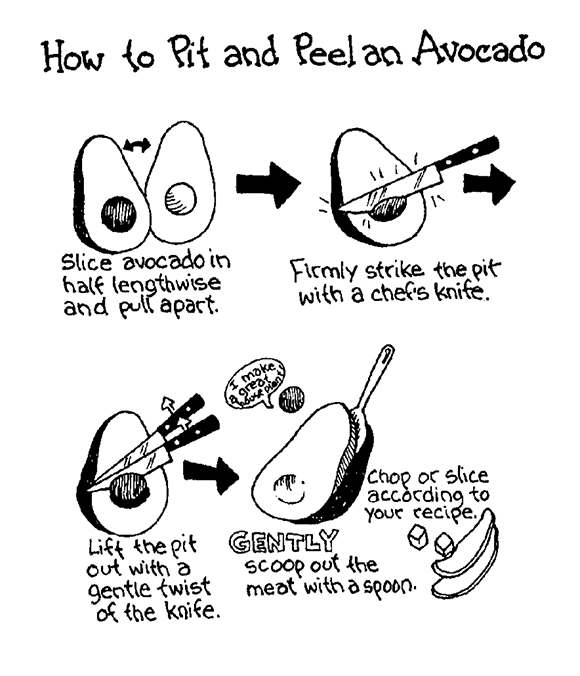Paleo Cookbook For Dummies (54 page)
Read Paleo Cookbook For Dummies Online
Authors: Kellyann Petrucci

 Post-workout fuel:
Post-workout fuel:
Within 30 minutes of finishing your workout, refuel with Paleo-approved, nutrient-dense carbohydrates (such as a sweet potato or some butternut squash) along with lean protein (such as eggs, chicken breast, or salmon). Fat slows the absorption of food in your digestive system, and that usually works in your favor. Post-workout is the one time when you want to minimize fat so your muscles can quickly absorb the carbohydrates and protein they need to recover from your workout.
Part II
Simple Paleo Soups, Salads, and Snacks

Illustration by Elizabeth Kurtzman
 Find out what foods raise a red flag and should be avoided on a Paleo diet at
Find out what foods raise a red flag and should be avoided on a Paleo diet atwww.dummies.com/extras/paleocookbook.
In this part . . .
 Warm your spirit while boosting your immunity with nutrient-dense Paleo soups, a proven remedy for just about any ailment.
Warm your spirit while boosting your immunity with nutrient-dense Paleo soups, a proven remedy for just about any ailment.
 Dig into the raw nutrition and fiber of Paleo salads to cleanse and create healing in your gut, which is the foundation of so much of your health.
Dig into the raw nutrition and fiber of Paleo salads to cleanse and create healing in your gut, which is the foundation of so much of your health.
 Whip up Paleo sauces, dressings, and salsas that make you wonder why you ever used starchy, calorie-ridden, sugary, store-bought products.
Whip up Paleo sauces, dressings, and salsas that make you wonder why you ever used starchy, calorie-ridden, sugary, store-bought products.
 Grab and go with energizing, nourishing Paleo snacks that aren't weighed down with sugar, carbohydrates, and additives.
Grab and go with energizing, nourishing Paleo snacks that aren't weighed down with sugar, carbohydrates, and additives.
Chapter 7
Savoring Comforting and Nutritious Paleo Soups
In This Chapter
 Weeding out wheat, gluten, and MSG ingredients
Weeding out wheat, gluten, and MSG ingredients
 Soup-ersizing nutrition with Paleo broths and soups
Soup-ersizing nutrition with Paleo broths and soups
Paleo soups are a home run every time. Properly prepared soups are fantastic for their
nutritional density,
meaning they have tons of nutrition packed into their calories. Nutritionally dense foods are ideal to get a lean, strong body.
This chapter contains nine recipes for soups and broths. Broths or stocks are particularly healing because they concentrate the flavors and nutrients of their ingredients. They extract the minerals from ingredients such as vegetables in the form of electrolytes, which are easy for your body to
assimilate
(absorb) so that you build strong bones and healthy cells.
Soups are so comforting, grounding, and healing â and if you get a good bowl, you leave the table feeling as if you've had an experience. These soups are filled with flavor, easy to cook, and easy on the wallet.
Paying Attention to Ingredients
I provide recipes for great soups and broths in this chapter with the intention that you'll make them instead of buying ready-to-eat soups or broths at the grocery store. But if you find yourself in a situation where you just have to buy ready-made soup or broth, you can still ensure that you're still getting the best ingredients and none of the bad stuff.
Most canned soups contain gluten, preservatives, monosodium glutamate (MSG), and high sodium levels. Be extra careful to check labels and watch for sneaky names for wheat/gluten or MSG that often find their way into the broths:
 Sneaky names for wheat and gluten:
Sneaky names for wheat and gluten:
If the following ingredients appear on a label, the food may contain wheat and/or gluten:
⢠Artificial flavoring
⢠Bleached flour


